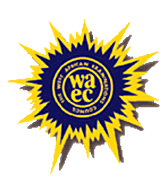Legit WAEC 2024 WAEC 2024 Chemistry practical question and answers questions and answers questions and answers
JOIN OUR CHANNEL FOR SOLUTIONS WAEC 2024 WAEC 2024 Chemistry practical question and answers WAEC 2024 questions and answers QUESTIONS AND ANSWERS
Price: 600
Delivery: faster
Time: midnight
Legit WAEC 2024 general mathematics questions and answers, WAEC math questions, WAEC math expo, WAEC math runs, waec math answers, waec math Chokes,
For more details you chat the admin or click the link below
CHEMISTRY PRACTICAL-QUESTIONS
(1a)
TABULATE PLEASE
Burette | Rough| 1st | 2nd
Final reading(cm³) | 19.00 | 18.10| 18.10|
Initial reading(cm³) | 0.00| 0.00| 0.00
Volume of A used(cm³) | 19.00| 18.10| 18.10|
Average titre = 18.10+18.10/2
= 18.10cm³
(1bi)
Conc. of B in mol/dm³ = ??
Ca = 0.020mol/dm³, Va = 18.10cm³
Na= 1, Nb = 5, Vb= 25.00cm³ , Cb= ??
CaVa/CbVb= Na/Nb
Cb = CaVaNa/VbNb
Cb= (0.020*18.10*5)/(25.0*1)
Cb= 0.0724mol/dm³
(1bii)
Con. of B in g/dm³ = ??
Con.(g/dm³) = Mass*1000/volume
= 3.8*1000/250
= 15.2g/dm³
(1biii)
FeSO₄<---> Fe²⁺ + SO₄²⁻
1 mol of FeSO₄ 1mol Fe²⁺
0.0724mol/dm³ xmol/dm Fe²⁺
x= 1*0.0724 = 0.0724mol/dm³
Mole= Con.*Vol/1000
Mole = 0.0724*250/1000
Mole= 0.0181mol
Mass= mole * m.m
= 0.0181*56
= 1.0136g
(1biv)
Percentage= 1.0136*100/15.2
= 6.67%
(2a)
When all of C is added to a test tube with about
10cm³ of distilled water and shaken, the mixture is filtered. The residue and the filtrate are obtained.
Observations:
The residue: This will contain the insoluble salt(s) present in C.
The filtrate: This will contain the soluble salt(s) present in C.
(2bi)
Heating about 2cm³ of the filtrate in a boiling tube strongly.
Observations:
If there is effervescence (bubbling), it indicates the presence of a carbonate salt in the filtrate.
The gas evolved is likely carbon dioxide (CO₂).
(2bii)
Adding dilute HCl to half of the residue in a test tube.
Observations:
If there is effervescence (bubbling), it indicates the presence of a carbonate salt in the residue.
The gas evolved is likely carbon dioxide (CO₂).
(2biii)
Adding aqueous NaOH in drops, then in excess, to about 2cm³
Observations:
If a white precipitate forms upon adding NaOH drops, and it dissolves upon excess addition of NaOH, it indicates the presence of a metal hydroxide in the solution.
(3a)
(i)ammonia (NH₃)
(ii)carbon dioxide (CO₂).
(3b)
(i)A graduated pipette
(ii) A burette can be used.
(3c)
A fume cupboard in a laboratory is used to provide ventilation that limits exposure to toxic fumes, vapors, or dust.
(3d)
(i)safety goggles.
(ii)lab coats.
(iii)gloves.
(2biv)
Adding aqueous ammonia in drops, then in excess, to another 2cm³ of the clear solution from (ii).
Observations:
If a colored precipitate forms upon adding ammonia drops, and it dissolves upon excess ammonia addition, it indicates the presence of a metal hydroxide in the solution.

